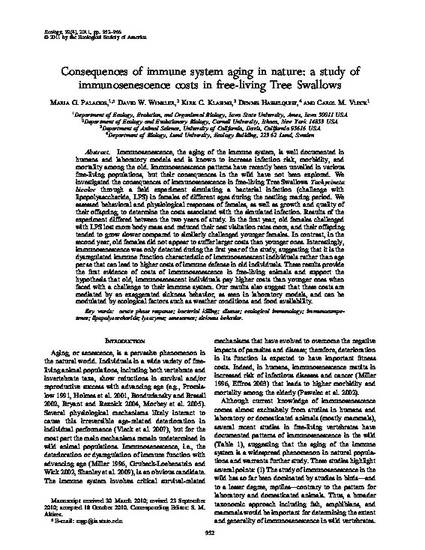
Immunosenescence, the aging of the immune system, is well documented in humans and laboratory models and is known to increase infection risk, morbidity, and mortality among the old. Immunosenescence patterns have recently been unveiled in various free-living populations, but their consequences in the wild have not been explored. We investigated the consequences of immunosenescence in free-living Tree Swallows Tachycineta bicolorthrough a field experiment simulating a bacterial infection (challenge with lipopolysaccharide, LPS) in females of different ages during the nestling rearing period. We assessed behavioral and physiological responses of females, as well as growth and quality of their offspring, to determine the costs associated with the simulated infection. Results of the experiment differed between the two years of study. In the first year, old females challenged with LPS lost more body mass and reduced their nest visitation rates more, and their offspring tended to grow slower compared to similarly challenged younger females. In contrast, in the second year, old females did not appear to suffer larger costs than younger ones. Interestingly, immunosenescence was only detected during the first year of the study, suggesting that it is the dysregulated immune function characteristic of immunosenescent individuals rather than age per se that can lead to higher costs of immune defense in old individuals. These results provide the first evidence of costs of immunosenescence in free-living animals and support the hypothesis that old, immunosenescent individuals pay higher costs than younger ones when faced with a challenge to their immune system. Our results also suggest that these costs are mediated by an exaggerated sickness behavior, as seen in laboratory models, and can be modulated by ecological factors such as weather conditions and food availability.
Available at: http://works.bepress.com/carol-vleck/7/

This article is from Ecology 92 (2011): 952, doi: 10.1890/10-0662.1. Posted with permission.